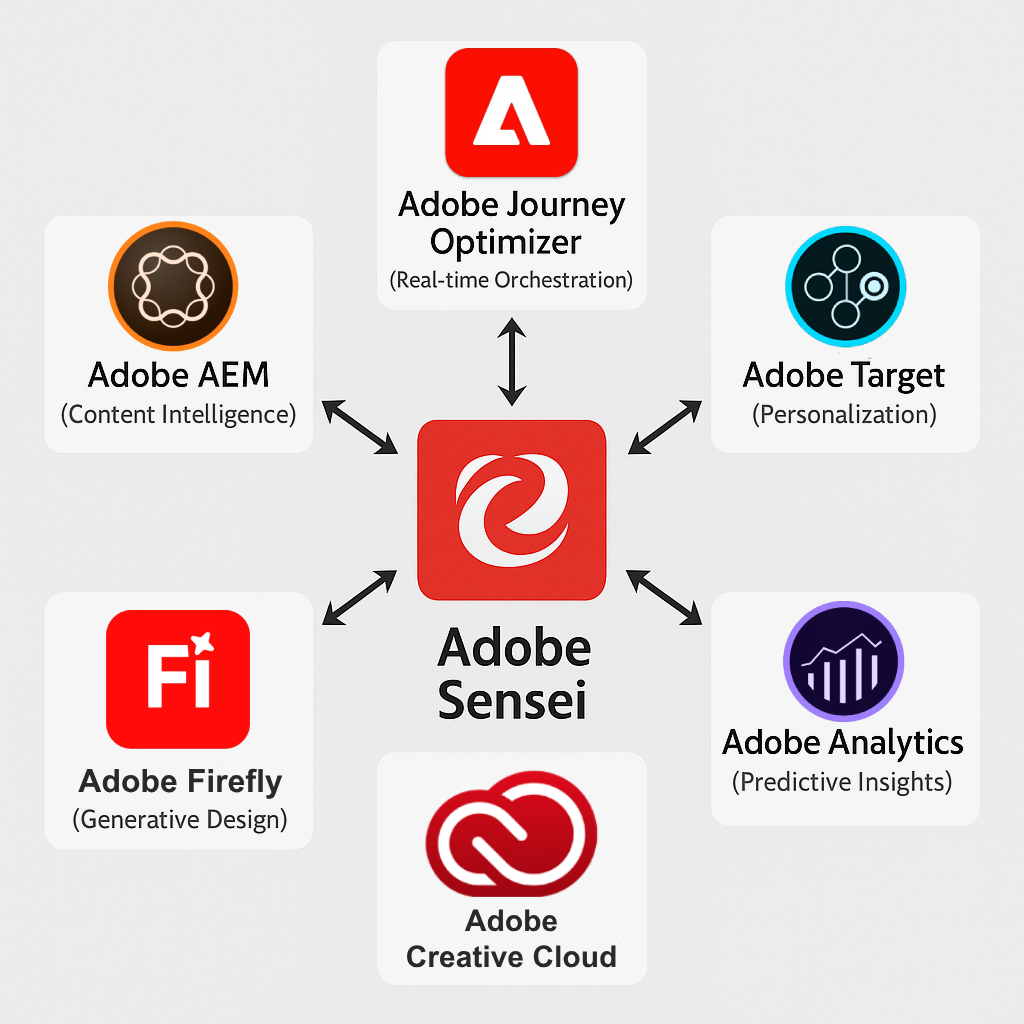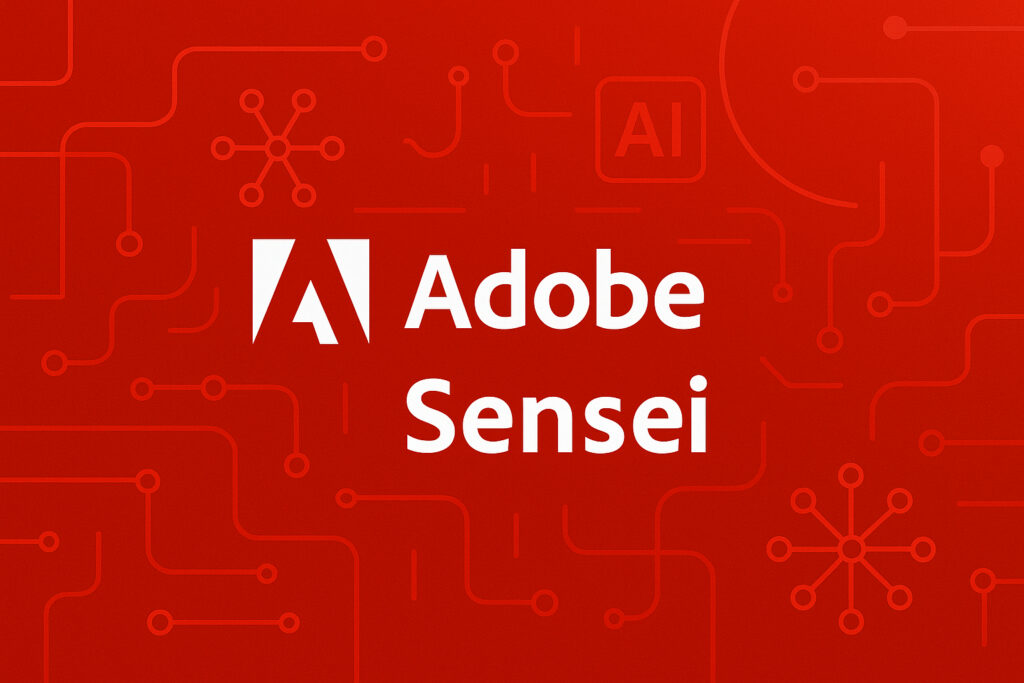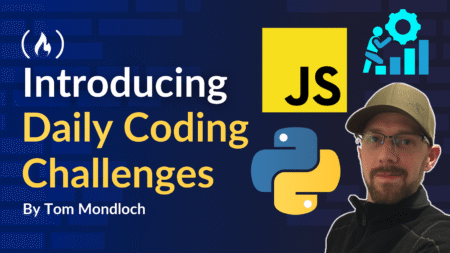In our previous post, we explored how Adobe Sensei and GenAI capabilities are already transforming content management through Adobe Experience Manager (AEM). But Sensei’s true value isn’t limited to content operations, it’s the unified AI engine that quietly powers marketing intelligence, customer personalization, and even creative automation across Adobe’s enterprise ecosystem.

From CMS to Customer Journeys: Sensei in Adobe Journey Optimizer
Adobe Journey Optimizer (AJO) is where content and context meet action. Sensei enables:
Real-time customer decisioning based on behaviors, preferences, and lifecycle stage.
AI triggered messaging across web, mobile, and email, personalized down to the moment.
Intelligent suppression to avoid over communication and fatigue.
Sensei’s integration with AJO leverages Adobe’s serverless, cloud native architecture. Real-time event streams are processed by Sensei’s orchestration layer, which updates unified customer profiles and triggers journey actions via RESTful APIs. Developers can configure behavioral triggers and always on workflows, ensuring personalization adapts dynamically to customer behavior.
Use Case: A financial services provider using Sensei in AJO to trigger credit card upgrade offers based on predictive lifetime value.
Smarter Testing and Targeting with Adobe Target + Sensei
With Sensei, Adobe Target surpasses traditional manual testing methods:
Auto-allocate traffic to winning variations in real-time.
Use AI powered personalization to dynamically show the best offer or layout per visitor.
Enable 1:1 personalization at scale, without hand coding rules.
Sensei’s machine learning models in Target analyze user interactions and conversion data, dynamically adjusting content allocation. Through the API first integration, developers can connect Target’s personalization engine with external data sources or headless front ends (e.g., React, Next.js), delivering seamless, real-time experiences across web and mobile.
Strategic Edge: Unlike rule-based personalization tools, Target + Sensei adapts to changes in customer behavior automatically.
Predictive Intelligence in Adobe Analytics
Adobe Analytics isn’t just a data warehouse, with Sensei, it becomes a predictive insight engine:
Spot churn risks early using propensity modeling.
Forecast campaign outcomes and key metrics with predictive analytics.
Automatically surface anomalies and outliers in performance data.
Sensei applies neural networks and statistical models to massive, real-time datasets in Analytics. It automates segmentation, anomaly detection, and attribution modeling, providing predictive insights and real time alerts. Analysts and data engineers can access these insights via APIs, integrating them into custom dashboards or workflows.
Example: A retail brand reduced return rates by 12% by identifying friction points in product discovery, surfaced automatically by Sensei.
Creative Intelligence: Sensei in Adobe Firefly and Creative Cloud
While other GenAI tools offer fast content, Adobe focuses on brand safe, enterprise ready creativity:
Firefly generates images, illustrations, and design elements, trained on licensed content.
Smart tools in Creative Cloud (Photoshop, Illustrator) automate repetitive tasks like object removal, resizing, and background cleanup.
Express and Premiere integrate GenAI for video and social content creation, all aligned to brand.
Firefly’s GenAI models are accessible via APIs, allowing creative teams and developers to automate asset generation and integrate custom workflows. Organizations can train Firefly on their own asset libraries, ensuring outputs are brand aligned and compliant. Creative Cloud’s Sensei powered features leverage local and cloud-based inference for real-time editing and batch processing.
Why It Matters: Sensei empowers creative teams to scale content output without sacrificing brand integrity, a critical need for large enterprises.
Adobe Sensei Architecture Across the Enterprise
Sensei operates as a modular, cloud native AI framework embedded across Adobe Experience Cloud, Creative Cloud, and Document Cloud. Its serverless infrastructure (Adobe I/O Runtime) processes AI tasks asynchronously and at scale. The orchestration layer manages authentication, analytics, and dynamic routing of requests to specialized microservices, such as the Asset Compute Service in AEM, which handles asset jobs via declarative JSON requests and secure pre-signed URLs.
Integration Patterns:
AEM & Asset Compute: Serverless microservices process assets at scale, with extensibility via Adobe Developer App Builder for custom workflows.
Journey Optimizer: Real-time event processing and journey orchestration, with API driven triggers and dynamic content delivery.
Analytics: Automated modeling and predictive insights, accessible via APIs for integration with enterprise data lakes and dashboards.
Firefly & Creative Cloud: Generative AI and automation, with custom model training and workflow integration.
Security, Compliance, and Customization
Adobe Sensei’s architecture is designed for enterprise grade security and compliance:
All data transfers use secure, pre signed URLs.
AI features adhere to Adobe’s AI Ethics principles, with privacy compliant training (no public scraping).
Supports AWS and Azure for cloud flexibility.
Organizations can build proprietary models or integrate third party AI services using Adobe Developer App Builder, meeting unique business and regulatory needs.
Developer and IT Enablement
Extending Sensei: Use Adobe Developer App Builder to create custom microservices, event driven workflows, and UI extensions.
API-First Integration: All Sensei powered services expose RESTful APIs for seamless integration with enterprise systems.
Monitoring & Analytics: Built in monitoring and analytics allow IT teams to optimize performance, track usage, and ensure reliability.
Platform Summary Table
| Platform | Key Capabilities Enabled by Sensei | AI Value Prop |
|---|---|---|
| AEM | Auto tagging, smart crops, content recommendations | Efficiency + scale for content operations |
| Journey Optimizer | Real-time decisioning, AI triggered journeys | Hyper personalized customer journeys |
| Adobe Target | Auto allocation, real-time 1:1 personalization | Testing at scale, adaptive UX |
| Adobe Analytics | Predictive insights, anomaly detection | Proactive performance optimization |
| Firefly & Creative Cloud | Brand safe generative assets, smart design automation | Creative productivity with brand control |
Connected, Compliant, and Customizable AI
Adobe Sensei’s real differentiators for the enterprise:
Centralized governance across tools and clouds
Privacy compliant AI training, no public scraping
Custom models and integrations for regulated industries
This isn’t generic GenAI, its enterprise grade intelligence built into your marketing and creative stack.
The Real Value of Adobe Sensei Is in the Connections
While Adobe Sensei may start in AEM for many teams, its real impact grows exponentially as it’s applied across the full Experience Cloud and Creative Cloud. From journey orchestration and audience targeting to intelligent creative production, Sensei is more than a set of features, it’s an integrated intelligence layer driving personalization, efficiency, and insight across the enterprise.
Have you implemented Sensei powered workflows or personalization in your organization? Share your story in the comments below or contact our team to explore how Adobe Sensei can unlock new value for your enterprise.
Stay tuned for the next post, where we’ll explore how Sensei compares to other enterprise AI platforms, and what makes Adobe’s approach uniquely valuable.
Source: Read MoreÂ

![How to focus on building your skills when everything’s so distracting with Ania Kubów [Podcast #187]](https://devstacktips.com/wp-content/uploads/2025/09/f7c52449-77f9-4fa4-bbd5-34c3773658dd-6kiwIT-450x253.png)
